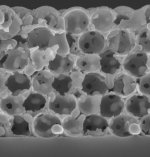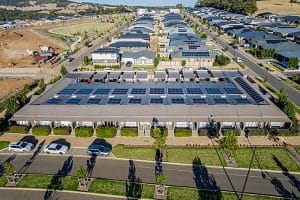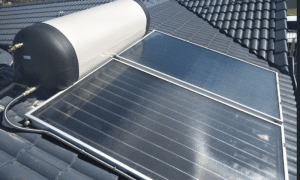Heat is the enemy of solar panels, but one day it could be their best friend.
Stanford scientists have developed a heat resistant material that could make a significant improvement to solar cell conversion efficiency.
While in theory conventional single-junction solar cells should be able to achieve 34 percent efficiency; in practice they don’t .
Some of this is due to traditional solar cells only being able to convert a small part of the solar spectrum, with the majority of the sun’s rays being lost as heat – and that heat also impacts heavily on cell efficiency. Other wavelengths in the spectrum simply pass through the cell.
The new material converts heat from the sun into infrared light, which can than be absorbed by solar cells to make electricity.
The technology, known as thermophotovoltaics, has been around for a while, but has been greatly limited due to temperature limitations. Earlier prototypes failed at temperatures below 2200 degrees Fahrenheit (1200 degrees Celsius) – their 3D structures collapsed. The new thermal emitter remains stable at temperatures as high as 2500 F (1400 C).
“Essentially, we tailor the light to shorter wavelengths that are ideal for driving a solar cell,” says Shanhui Fan, a professor of electrical engineering at Stanford University. “That raises the theoretical efficiency of the cell to 80 percent, which is quite remarkable.”
The thermal emitters are constructed of tungsten coated in a nanolayer of a ceramic material called hafnium dioxide.
“We’ve demonstrated that the tailoring of optical properties at high temperatures is possible,” said co-author of a study on the material; Paul Braun, a professor of materials science at Illinois.
“Hafnium and tungsten are abundant, low-cost materials, and the process used to make these heat-resistant emitters is well established. Hopefully these results will motivate the thermophotovoltaics community to take another look at ceramics and other classes of materials that haven’t been considered.”
Source/image source







































